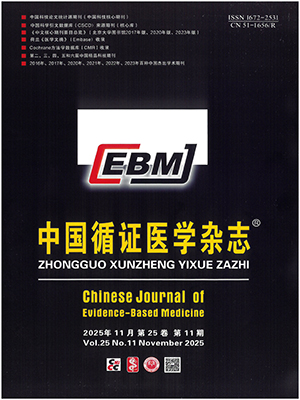| 1. |
ILO. Extending social protection in health through communitybased health organizations evidence and challenges. DiscussionPaper 2002. Access from: www.ilo.org/publns.
|
| 2. |
Lagarde M. Evidence from systematic reviews to inform decisionmaking regarding financing mechanism that improve access tohealth services for poor people.
|
| 3. |
Ekman B. Community-based health insurance in low-incomecountries: a systematic review of the evidence. Health Policy Plan, 2004, 19 (5): 249-270.
|
| 4. |
WHO Regional Office for South-East Asia. Social Health Insurance.
|
| 5. |
Wagstaff A, Lindelow M. Can Insurance Increase Financial Risk? The Curious Case of Health Insurance in China. The World Bank USA, 2005.
|
| 6. |
Zhu L. Effects of Rural Medical Financial Assistance in China. China & World Economy, 2007, 15(2): 16-28.
|
| 7. |
王桂林, 孟慶躍, 成剛, 等. 沈陽市和成都市貧困醫療救助項目實施效果評價. 中國衛生經濟, 2005, 24(10): 74-75.
|
| 8. |
Sun XY, Jackson S, Carmichael G, et al. Catastrophic Paymentand Health Protection in Rural China-Impact of New CooperativeMedical Scheme in Shandong Province. Discussion Paper No.344, 2007.
|
| 9. |
Jackson S, Sleigh AC, Peng L, et al. Low Premium Insurance Compared to the Out-of-Pocket System.
|
| 10. |
徐潤龍, 葉真, 曾國經, 等. 浙江省三縣新型農村合作醫療方案對解決“因病致貧”問題的作用評價. 中國衛生經濟, 2006, 25(278).
|
| 11. |
朱偉明. 寶山區新型農村合作醫療籌資、運行機制研究. 中國農村衛生事業管理, 2005, 25(9): 8-10.
|
| 12. |
常文虎, 趙勁紅, 鄒聲金, 等. 大病醫療統籌對農民災難性衛生支出作用的案例研究. 中國初級衛生保健, 2005, 228(2): 2-6.
|
| 13. |
張繼偉, 楊永萌, 張紅麗, 等. 黑龍江省新型農村合作醫療試點縣補償方式調查研究. 中國衛生經濟, 2005, 24(4): 56-59.
|
| 14. |
鐘邃, 周曉媛, 曹念東, 等. 成都市新型農村合作醫療家庭賬戶效果分析. 現代預防醫學, 2006, 33(1): 18-20.
|
| 15. |
王承利, 郭泅梅. 平陰縣玫瑰鎮實行新型農村合作醫療情況分析.社區醫學, 2006, 4(1): 3.
|
| 16. |
賈曉蓉, 陳興寶, 張文忠, 等. 上海市郊區新型農村合作醫療防止因病致貧能力研究. 衛生經濟研究, 2006, (1): 34-35.
|
| 17. |
胡善聯. 全國新型農村合作醫療制度的籌資運行狀況. 中國衛生經濟, 2004, 23(9): 24-25.
|
| 18. |
魏晶晶, 呂柏, 斯日爾格楞, 等. 新疆地區6個試點縣合作醫療籌資水平及補償方案分析. 中國衛生事業管理, 2006, 6: 367-368.
|
| 19. |
陳迎春, 徐錫武, 王蓉, 等. 新型農村合作醫療減緩“因病致貧”效果測量. 中國衛生經濟, 2005, 24(8): 26-28.
|
| 20. |
顏媛媛, 張林秀, 羅斯高, 等. 新型農村合作醫療的實施效果分析——來自中國5省101個村的實證研究. 中國農村經濟, 2006,(5): 64-71.
|
| 21. |
崔欣, 羅力, 李春芳, 等. 新型農村合作醫療降低就醫經濟風險的作用. 中國衛生資源, 2005, 8(6): 253-255.
|
| 22. |
Devadasan N, Criel B, Van Damme W, et al. Indian communityhealth insurance schemes provide partial protection againstcatastrophic health expenditure. BMC Health Services Research, 2007.
|
| 23. |
Ranson MK. The SEWA Medical Insurance Fund in India. HealthFinancing for Poor People, 2004, 275-292.
|
| 24. |
Ranson MK. Reduction of catastrophic health care expendituresby a community-based health insurance scheme in Gujarat, India:current experiences and challenges. Bulletin of the World HealthOrganization, 2002, 80(8): 613-621.
|
| 25. |
Gumber A. Hedging the health of the poor: the case for communityfinancing in India. The International Bank for Reconstruction andDevelopment/ The World Bank, 2001.
|
| 26. |
Gumber A. The Potential Role of Community Financing in India.The world bank, 2004.
|
| 27. |
Ranson MK. The impact of sewa’s medical insurance fundon hospital utilization and expenditure health. Nutrition andPopulation Discussion Paper, 2001.
|
| 28. |
Wagstaffa A. Health Insurance for the Poor: Initial Impacts ofVietnam’s Health Care Fund for the Poor. World Bank PolicyResearch Working Paper, 2007.
|
| 29. |
Wagstaff A, Pradhan M. Health Insurance Impacts on Health and Nonmedical Consumption in a Developing Country. World BankPolicy Research Working Paper, 2005.
|
| 30. |
Sepehri A, Sarma S, Simpson W. Does non-profit health insurancereduce financial burden? Evidence from the Vietnam Living Standards Survey panel. Paper to be presented at the 38th Annual Meetings of the CEA at Ryerson University Toronto, 2004.
|
| 31. |
Castano RA, Arbelaez JJ, Giedion UB, et al. Equitable financing, outof-pocket payments and the role of health care reform in Colombia. Health Policy and Planning, 2002, 17(1): 5-11.
|
| 32. |
Ruiz F, Amaya L, Venegas S. Progressive segmented healthinsurance: Colombian health reform and access to health services. Health Econmy, 2007, 16: 3-18.
|
| 33. |
Castaco R, Zambrano A. Financial protection for the poor in Colombia: the effects of a subsidized health insurance scheme. Economa No 12, 2007.
|
| 34. |
Koren R, Steinberg DM. The impact of filipino micro health insurance units on income-related equality of access to healthcare. Health Policy, 2006, 77: 304-317.
|
| 35. |
Gertler P, Solon O. Who Benefits From Social Health Insurance? Evidence from the Philippines, 2002.
|
| 36. |
Gotsadzea G, Zoidze A, Vasadze O. Reform strategies in Georgia andtheir impact on health care provision in rural areas: evidence from ahousehold survey. Social Science & Medicine, 2005, 60: 809-821.
|
| 37. |
Gotsadze G, Bennett S, Ranson K, et al. Health care-seeking behaviour and out-of-pocket payments in Tbilisi, Georgia. HealthPolicy Plan, 2005, 20(4): 232-242.
|
| 38. |
Derriennic Y, Wolf K, Kiwanuka-Mukiibi P. An Assessment of Community-Based Health Financing Activities in Uganda. The Partners for Health Reformplus Project (PHRplus), 2005.
|
| 39. |
Xu K, Evans DB, Kadama P, et al. Understanding the impactof eliminating user fees: utilization and catastrophic healthexpenditures in Uganda. Soc Sci Med, 2006, 62(4):866-876.
|
| 40. |
Schneider P, Diop F. Community-Based Health Insurance inRwanda. The world bank, 2004.
|
| 41. |
Schneider P, Diop F. Synopsis of Results on the Impact of Community-Based Health Insurance on Financial Accessibility to Health Care in Rwanda. Discussion Paper, Health, Nutrition andPopulation (HNP), 2001.
|
| 42. |
Ju?tting JP. Financial Protection and Access to Health Care in Rural Areas of Senegal. Health Financing for Poor People--ResourceMobilization and Risk Sharing, 2004, chapter6: 232-247.
|
| 43. |
Asfaw A, Ju?tting JP. The Role of Health Insurance in Poverty Reduction: Empirical Evidence From Senegal. Intl Journal of PublicAdministration, 2007, (30): 835-858.
|
| 44. |
Jacobs B, Price N. Improving access for the poorest to public sector health services: insights from Kirivong Operational Health Districtin Cambodia. Health Policy Plan, 2006, 21(1): 27-39.
|
| 45. |
Jacobs B, Price N. The impact of the introduction of user fees at a district hospital in Cambodia. Health Policy Plan, 2004, 19(5):310-321.
|
| 46. |
Baschieri A, Falkingham J. Formalizing informal payments: the progress of health reform in Kyrgyzstan. Central Asian Survey, 2006,25(4): 441-460.
|
| 47. |
Falkingham J. Poverty, out-of-pocket payments and access to health care: evidence from Tajikistan. Social Science & Medicine, 2004, 58:247-258.
|
| 48. |
Ekman B. Catastrophic health payments and health insurance: Some counterintuitive evidence from one low-income country. HealthPolicy, 2007, (83): 304-313.
|
| 49. |
Diop F, Yazbeck A, Bitrán R. The impact of alternative cost recovery schemes on access and equity in Niger. Health Policy Plan, 1995, 10(3): 223-240.
|
| 50. |
Moens F. Design, implementation, and evaluation of a community financing scheme for hospital care in developing countries: a prepaidhealth plan in the Bwamanda health zone, Zaire. Soc Sci Med, 1990, 30(12): 1319-1327.
|
| 51. |
Anonymous. Health Care Utilization, Expenditures, and Insurance: Household Survey Findings from Suez Governorate, Egypt. Partnersfor Health Reformplus (PHRplus), 2005.
|
| 52. |
Sulzbach S, Garshong B, Owusu-Banahene G. Evaluating the Effects of the National Health Insurance Act in Ghana. Baseline Report. Partners for Health Reformplus, 2005.
|
| 53. |
Huber JH. Ensuring access to health care with the introduction of user fees: a Kenyan example. Health Economics Research, 1993, 36(4):485-494.
|
| 54. |
Msuya JM, Ju?tting JP, Asfaw A. Impacts of Community Health Insurance Schemes on Health Care Provision in Rural Tanzania. Zentrum fu?r Entwicklungsforschung Center for DevelopmentResearch, 2004.
|
| 55. |
Knaul FM, Arreola-Ornelas H, Méndez-Carniado O, et al. Evidence is good for your health system: policy reform to remedy catastrophicand impoverishing health spending in Mexico. Lancet, 2006, 368(9549): 1828-1841.
|
| 56. |
Habichi J, Xu K, Couffinhal A, et al. Detecting changes in financial protection: creating evidence for policy in Estonia. Health Policy andPlanning, 2006, 21(6): 421-431.
|




